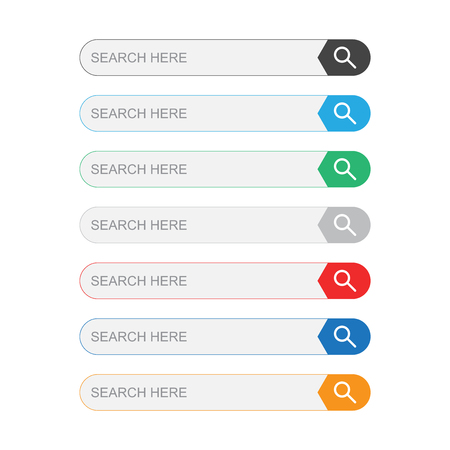1. Introduction to Googles Transparency Reports
For webmasters across the UK, staying informed about digital trends and search engine guidelines is crucial for maintaining visibility and compliance. One essential resource that often goes underutilised is Googles Transparency Reports. These reports provide a comprehensive overview of how Google interacts with governments, regulators, and users worldwide, specifically highlighting requests for content removal, data disclosure, and more. By understanding what these reports encompass, UK webmasters can gain valuable insights into how external factors—such as government policies or copyright issues—might impact their website’s presence on Google Search. This introductory section will explore the scope of Google’s Transparency Reports and clarify why they should be a fundamental part of every UK webmaster’s digital toolkit.
2. Key Metrics and Signals to Watch
When diving into Google’s Transparency Reports, UK webmasters must focus on the most relevant metrics and signals to ensure their sites align with both compliance and performance expectations. These reports are invaluable for identifying trends that affect UK-based websites, from search visibility changes to content removal requests. Below, we break down the core data points and signals to watch, with a practical lens on their impact within the UK digital landscape.
Essential Data Points in Google Transparency Reports
| Metric / Signal | Description | UK Relevance |
|---|---|---|
| Search Visibility Trends | Tracks fluctuations in how often your website appears in Google Search results. | Key for monitoring local algorithm updates affecting UK rankings. |
| Content Removal Requests | Number of requests by government or individuals for content takedown. | Helps assess legal risks and compliance needs under UK law (e.g., GDPR). |
| User Data Requests | Frequency of law enforcement inquiries regarding user information. | Critical for understanding privacy obligations specific to UK residents. |
| Copyright Takedown Notices | The volume of copyright infringement claims submitted against your site. | Vital for publishers, media, and e-commerce platforms operating in the UK. |
| HTTPS Adoption Rates | The percentage of site traffic delivered securely via HTTPS. | A ranking factor impacting trust and credibility among UK audiences. |
| Safe Browsing Warnings | Alerts about malware or phishing threats detected on your site. | Protects reputation and ensures ongoing eligibility for Google Search inclusion. |
Signals That Matter Most for UK Webmasters
1. Regional Trends: Pay close attention to data segmented by the United Kingdom. This allows you to isolate issues or opportunities unique to the British market, such as spikes in localised removal requests or algorithmic changes tied to UK-specific regulations.
2. Legal Compliance: Given the evolving landscape post-Brexit, review any signals related to GDPR-equivalent standards and other British privacy frameworks. Failure to act on these can lead to penalties or loss of user trust.
3. Security and Trust Indicators: High HTTPS adoption and absence of Safe Browsing warnings are now baseline expectations among UK internet users—any deviation should trigger immediate review.
4. Copyright Management: With the creative sector being a major part of the UK economy, staying ahead of copyright issues protects both brand value and operational continuity.
5. Proactive Response Rate: The speed at which you address flagged issues is also a silent signal monitored by Google; it reflects your site’s reliability and commitment to best practices within the UK context.
Actionable Takeaways for UK Webmasters
- Set up regular monitoring of transparency reports with filters set specifically for the UK region.
- Create internal benchmarks based on historical data from these reports to spot anomalies early.
- Liaise with legal advisors familiar with UK digital law for timely response to government or individual requests reflected in the reports.
The Bottom Line
The power of Google’s Transparency Reports lies not just in raw numbers but in what those signals mean for your site’s health, compliance, and reputation within the competitive UK online space. By regularly tracking these key metrics, webmasters can make informed adjustments that sustain growth while minimising risk.

3. UK-Specific Legal and Regulatory Context
For UK webmasters, interpreting Google’s Transparency Reports requires a clear understanding of the unique legal and regulatory environment in the United Kingdom. The intersection of UK law, national privacy expectations, and evolving internet regulations means that data published in these reports often carries distinct implications for British website operators.
Legal Requests: How UK Law Impacts Removals
The UK has its own legislative framework governing online content, including the Defamation Act 2013, the Data Protection Act 2018 (which enshrines GDPR into local law), and other statutes related to copyright and counter-terrorism. When UK authorities issue removal requests to Google, they do so within this national context. As a webmaster, it’s crucial to recognise that content flagged for removal is not just subject to Google’s policies but also to these specific legal standards. For example, privacy breaches or defamation claims may result in takedown notices highlighted in the reports.
Privacy Expectations: The UK Public Perspective
The British public has robust expectations around personal privacy online. This culture is reflected in how complaints are made to both regulators like the Information Commissioner’s Office (ICO) and platforms like Google. The Transparency Reports often detail requests related to ‘right to be forgotten’ removals—an area where UK residents have been especially active since GDPR implementation. Webmasters should regularly review their practices for handling personal data and user information to align with these high privacy standards.
Internet Regulations: Preparing for Future Changes
The digital landscape in the UK is rapidly evolving, with new legislation such as the Online Safety Act introducing stricter requirements for platforms and content providers. Google’s Transparency Reports serve as an early indicator of regulatory trends; spikes in removal requests or shifts in types of flagged content may signal upcoming changes that could impact your site’s compliance obligations. Staying informed through these reports allows webmasters to anticipate and adapt to regulatory changes before enforcement intensifies.
In summary, understanding how UK laws, privacy norms, and internet governance shape the data within Google’s Transparency Reports empowers webmasters to make evidence-based adjustments. By tracking relevant signals and proactively updating site policies, you can maintain compliance, protect user trust, and safeguard your digital presence within the British regulatory context.
4. Interpreting the Data: Practical Insights for Webmasters
Google’s Transparency Reports can initially appear overwhelming, but with a structured approach, UK webmasters can extract actionable insights that directly impact their site’s visibility and compliance. The key is to systematically interpret the data and implement data-driven adjustments.
Breaking Down the Report: What to Look For
The reports provide various signals, such as legal removal requests, government requests for user data, and information about service disruptions. Understanding what each signal means for your website is crucial. Here’s a breakdown of core elements:
| Signal | What It Means | Recommended Action |
|---|---|---|
| Legal Removal Requests | Content flagged for copyright or legal issues | Review affected content, consult UK legal guidelines, consider updates or removals |
| User Data Requests | Requests from authorities for user information | Ensure GDPR compliance and robust privacy policies |
| Service Disruptions | Outages or access issues impacting UK users | Monitor uptime, communicate transparently with users, liaise with ISPs if needed |
Practical Steps for UK Webmasters
To make sense of the Transparency Report data and use it to your advantage, consider the following steps:
- Regular Monitoring: Schedule monthly reviews of the reports to detect new trends or issues relevant to your site.
- Prioritise Compliance: Ensure all published content adheres to both Google’s guidelines and UK-specific legal requirements.
- User Privacy Focus: Update privacy statements regularly in line with evolving legislation like the UK GDPR.
- Liaise with Legal Experts: If you receive a removal notice or data request, consult with a solicitor familiar with digital law in the UK before taking action.
- User Communication: Transparently inform your users of any significant changes or disruptions stemming from actions taken based on report findings.
The Value of Proactive Adjustments
Treating Transparency Reports as an early warning system enables you to safeguard your site’s reputation and minimise risks. By acting promptly on reported signals—whether updating content, enhancing privacy measures, or improving technical stability—you ensure ongoing trust with both Google and your local audience.
5. Using Transparency for Improved Website Management
For UK webmasters, Googles Transparency Reports are more than just a compliance tool—they offer actionable insights that can significantly enhance website management. By closely analysing these reports, webmasters can identify security threats such as phishing attempts or malware infections that may target their domains. Proactively addressing these issues not only protects your site but also safeguards your users, maintaining trust and confidence among your British audience.
In addition to security, the reports provide valuable data on how your site is being perceived and indexed by Google. Monitoring for any manual actions or flagged content allows you to quickly resolve issues before they escalate into reputational damage or search ranking penalties. This level of vigilance is especially important in the UK market, where digital reputation and GDPR compliance are critical for both user trust and legal standing.
Transparency also builds stronger relationships with your users. By openly communicating about any incidents—such as data breaches or content takedowns—and explaining the corrective steps you’ve taken, you demonstrate accountability and foster loyalty. Consider creating a dedicated section on your site to share updates based on findings from the Transparency Reports. This not only reassures users but also aligns with best practices encouraged by the UK’s Information Commissioner’s Office (ICO).
Leveraging the granular data from Google’s reports enables you to make informed decisions regarding website policy, user privacy, and content management. Whether you operate an e-commerce platform, a news outlet, or a community forum, integrating transparency into your digital strategy will set you apart in the competitive UK online landscape.
Ultimately, using Googles Transparency Reports as part of your website management toolkit ensures you stay ahead of potential threats while reinforcing your commitment to security and openness—values that resonate strongly with UK internet users today.
6. Responding to Trends and Adjusting Web Strategies
Once you’ve started monitoring Google’s Transparency Reports, the next step for UK webmasters is to actively respond to emerging trends and modify web strategies accordingly. Analysing the data within these reports allows you to identify patterns—such as spikes in content removal requests, changes in user access, or regional regulatory developments—that may affect your site’s visibility or compliance.
Tracking Trends: Key Metrics for UK Sites
Focus on metrics that reflect the UK digital landscape. Pay close attention to statistics involving legal removals, copyright issues, or government requests specific to the UK. Use the report’s filtering tools to segment data by date, type of request, and origin. Setting up a regular review schedule—monthly or quarterly—enables you to benchmark performance over time and spot deviations early.
Data-Driven Adjustment of Web Strategy
If you notice an uptick in removal requests linked to specific types of content or keywords, consider reviewing your editorial policies and updating internal guidelines for compliance with both UK law and Google’s standards. Similarly, if accessibility trends show that users from certain regions are experiencing blocks or restrictions, it may be necessary to consult with legal advisors or technical teams to ensure your site remains accessible and compliant.
Proactive Compliance Efforts
Don’t wait for issues to escalate before acting. Build a proactive framework: update privacy policies, reinforce data security practices, and regularly audit content for potential copyright or libel risks. Engage with local digital rights organisations or industry groups to stay informed about evolving UK regulations.
Continual Improvement for Long-Term Success
The real value in Google’s Transparency Reports lies in their ability to inform ongoing improvement. By turning insights into action—refining your website content strategy, enhancing transparency, and maintaining robust compliance protocols—you not only reduce risk but also build user trust. This responsive approach helps position your site as a reputable player in the competitive UK online space.


